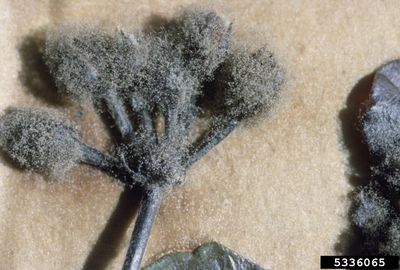Geranium Botrytis Symptoms
What is geranium botrytis blight? It is a very troublesome fungal disease that shows up most often in cool, humid conditions. The spores are transmitted to healthy plants via air currents. Symptoms typically begin with brown, water-soaked spots on flowers and leaves, usually attacking wilted blooms first. As the affected areas dry out, they are replaced with masses of fluffy tan, gray, or brown fungal growth. The disease usually spreads to the main stem, weakening the stem and causing flowers to drop from the plant. You may notice dark brown rot at the lower part of the stem. Eventually, the entire geranium plant turns brown and dry.
Controlling Blight Disease in Geranium Plants
Remove the affected plant parts immediately. Dispose of them in a sealed container to prevent spread. Rake up any fallen leaves, flowers, buds, and twigs. Keep the area clean and free of plant debris. Ensure there is adequate spacing between plants, which allows for proper air circulation and lowers humidity around the plants. Apply a layer of fine bark or other mulch to prevent water (and fungal spores) from splashing on the stem. Destroy wilted and fading blooms on the plant. Water at the base of the plants, preferably in the morning, using a soaker hose or drip irrigation system to keep the foliage as dry as possible. Avoid overhead watering. Apply fungicide as a foliar spray at the beginning of flowering and continue regularly throughout the season. Your local cooperative extension office can help you select the most effective product in your area. Look for a product that is nontoxic to bees and other beneficial insects. Switch fungicides periodically, as botrytis blight may become resistant.
